Spotting the Changes to Ford 6R80 ’15-Later Valve Bodies
Ford has made some changes to the ’15-later 6R80 valve bodies that you’ll want to note to prevent any interchange and drivability problems.
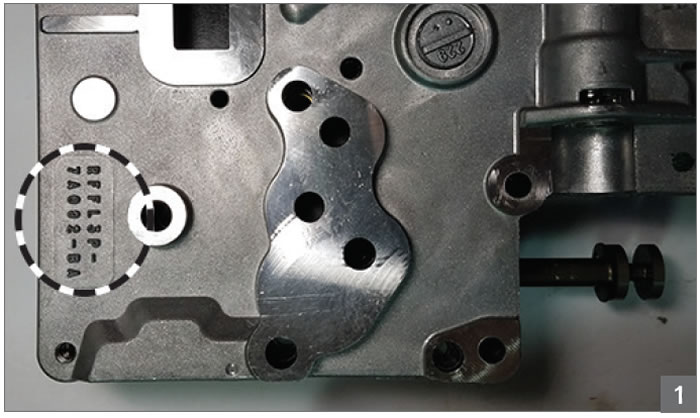
Allison 1000/2000/2400, 2000 – 2015
Subject Matter: Allison 1000/2000/2400
Critical Wear Areas & Vacuum Test Locations
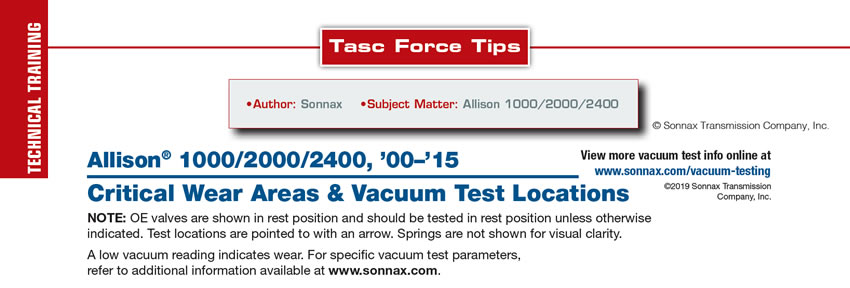
Ford 6R140 – Valve Body Identification Guide
The Ford 6R140 valve bodies can be difficult to distinguish between the early- middle- and late-styles if you don’t know what to look for. Spotting the differences in the casting numbers, separator plates and the cooler bypass valve is critical to proper identification.

Jatco/Nissan JF016E (RE0F10D), JF017E (RE0F10E)
Jatco/Nissan JF016E (RE0F10D), JF017E (RE0F10E) critical wear areas and vacuum test locations

Converter Clutch Control Part 2
An understanding of hydraulics is essential for properly diagnosing and repairing transmission problems. This is part two of a two-part article on how an understanding of converter clutch control aids in transmission diagnostics. Part one described fluid path and torque converter terminology. Part two examines the source and factors affecting the control of the clutch.
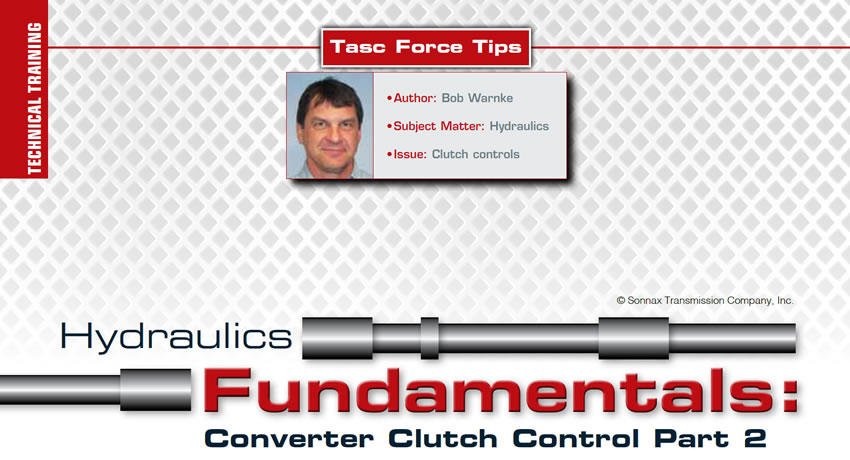
GM Gen. 2 6T70, 6T75 and 6T80
Critical Wear Areas & Vacuum Test Locations
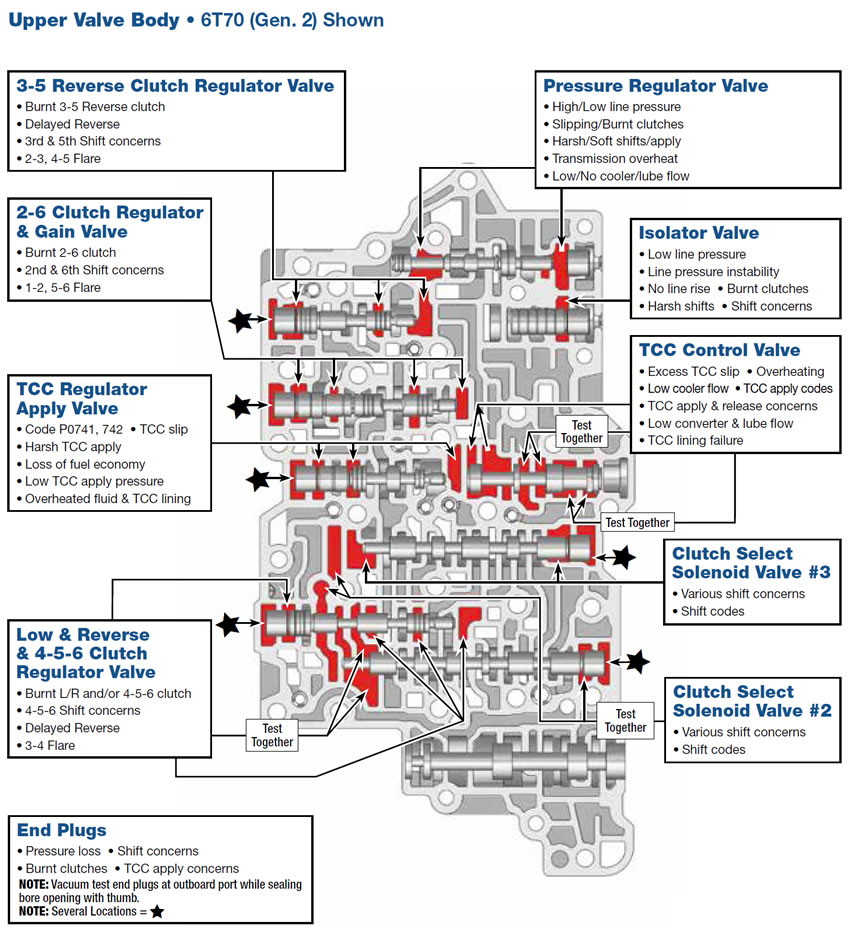
Hydraulics Fundamentals: Converter Clutch Control Part 1
An understanding of hydraulics is essential for properly diagnosing and repairing transmission problems. This is part one of a two-part article on how an understanding of converter clutch control aids in transmission diagnostics. Part one describes fluid path and torque converter terminology. Part two addresses the valves that control those circuits and the clutch control.
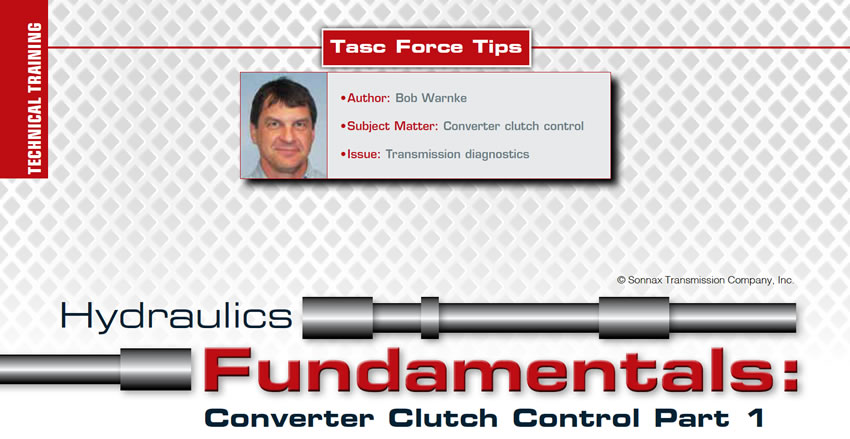
Hydraulics Fundamentals: Secondary Regulators
Jim Dial discusses the importance of understanding hydraulics when working with transmissions.
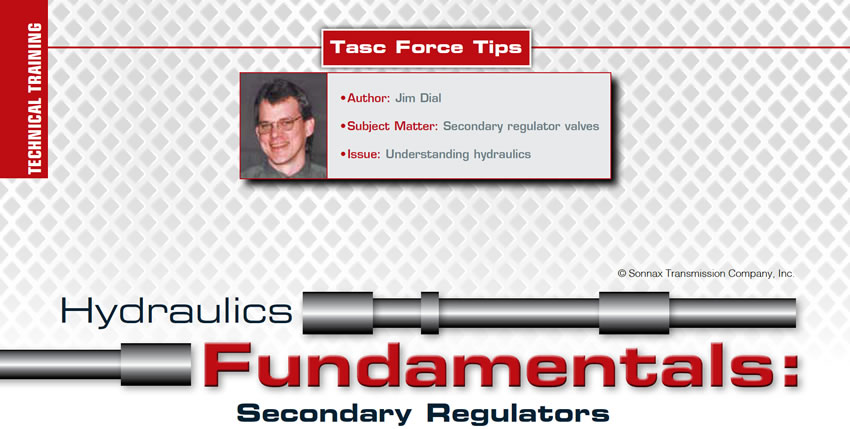
Hydraulics Fundamentals: Accumulators & Shift Feel
Accumulators and their circuits have been used for years as the primary method for controlling shift feel. These components are designed to modify a shift by essentially acting as a shock absorber for the fluid pressure that is applying a clutch, brake or band. Cushioning of this high pressure allows the apply component to engage gradually, instead of slamming on and rattling parts and bones alike.
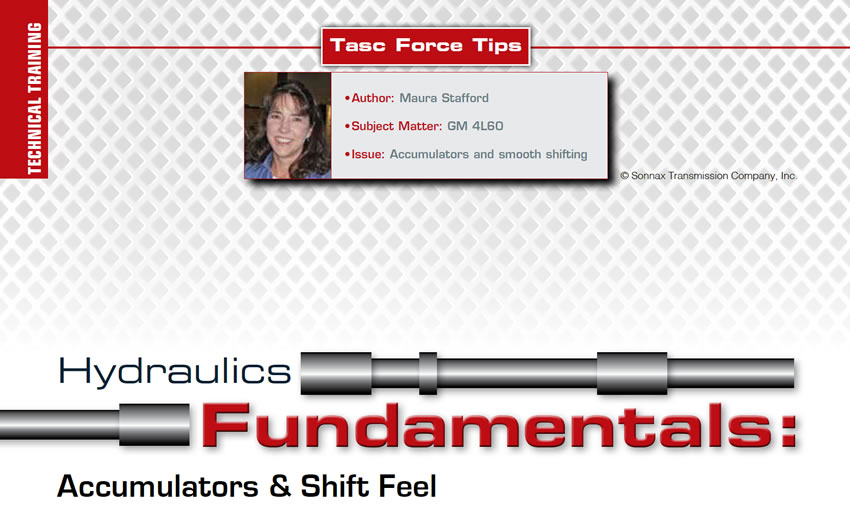
Hydraulics Fundamentals: Main pressure regulator valve lineups
As today’s transmissions continue to increase in complexity, from growing involvement in electronic controls to a seemingly exponential increase of available gear ratios, one concept remains the backbone of automatic transmissions: hydraulics. Forces, pressures and flow rates are critical considerations in all stages of a transmission’s lifecycle.

Friendly Rivalry Builds Success
Four years later, the results of the collaboration were two very similar (though slightly different), highly efficient, 6-speed transmissions. They boasted a 4% increase in efficiency over similar vehicles with automatic 4-speeds. Ford decided to name their models 6F50 and 6F55, while GM decided on 6T70/6T75/6T80. Ford has used their transmissions in the Edge, Taurus and Escape, to name a few; while GM has used them in the GMC Acadia and Terrain, and Chevy Impala and Traverse.

ZF8HP55 transmission
Sonnax has a set of vacuum diagrams for the ZF8HP55 transmission.

